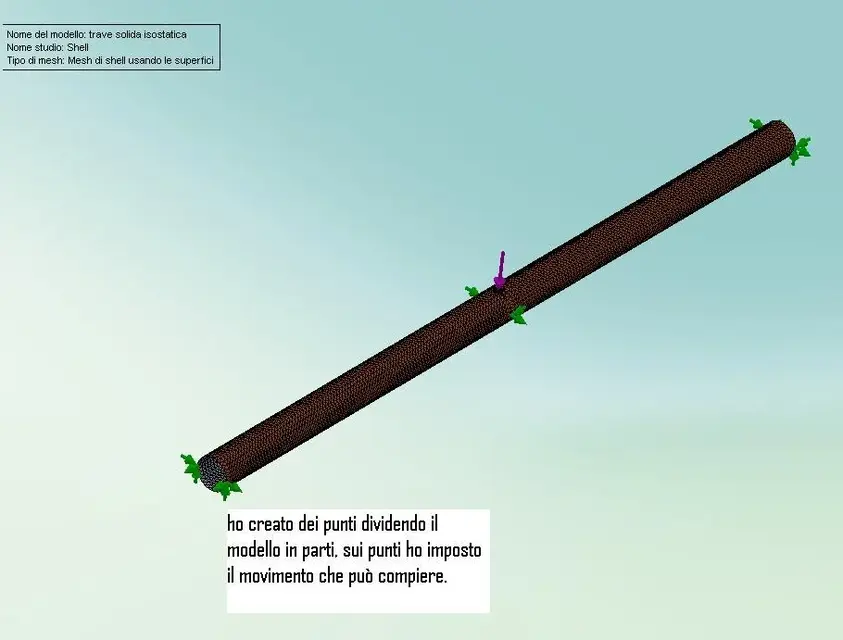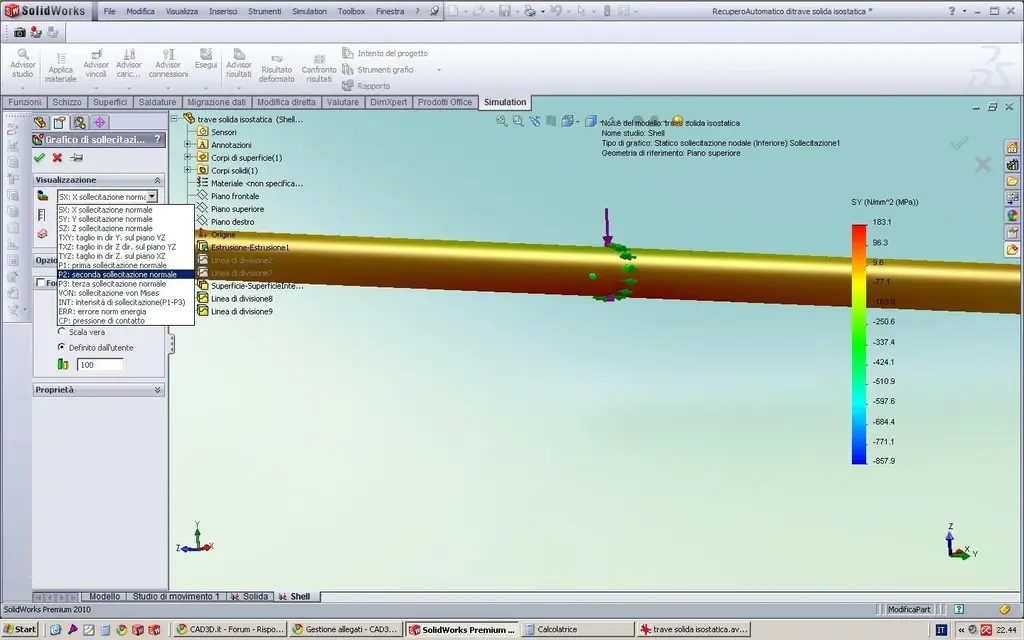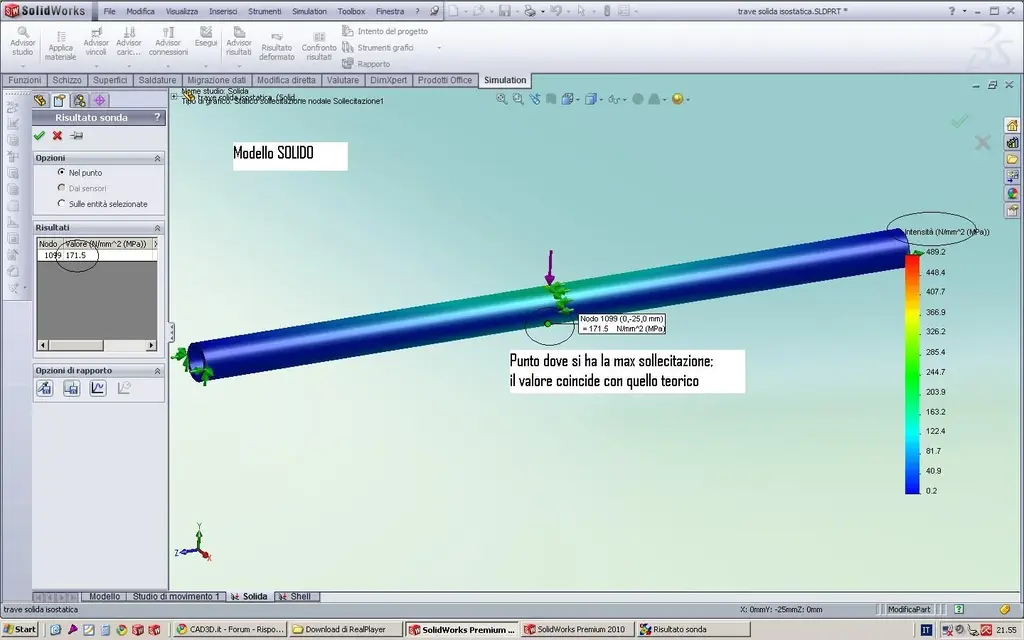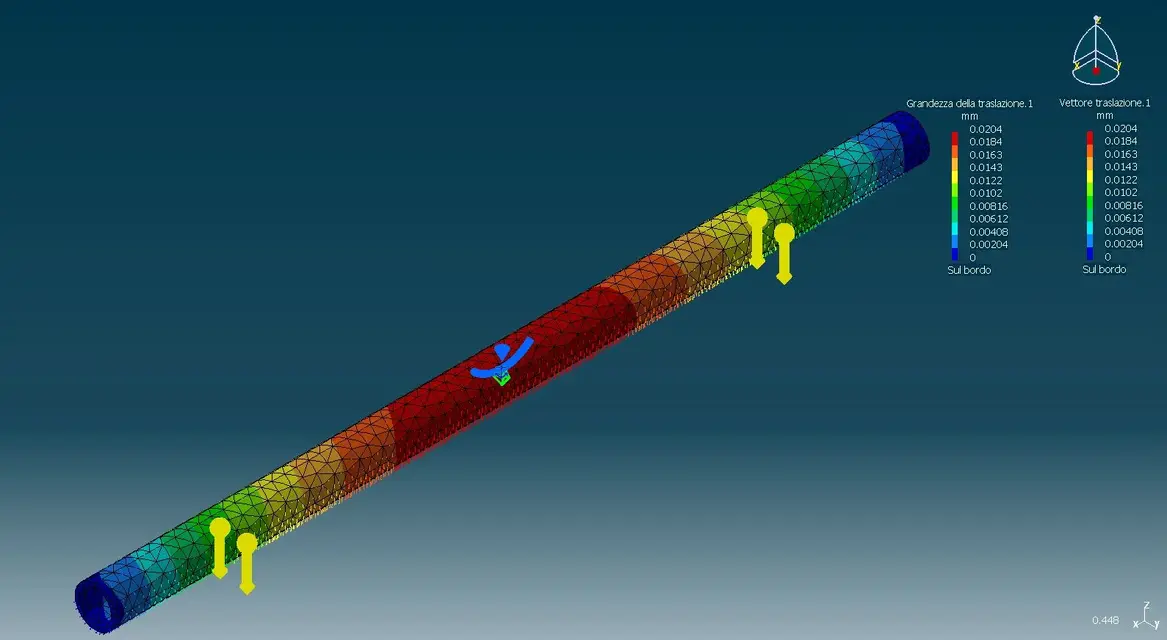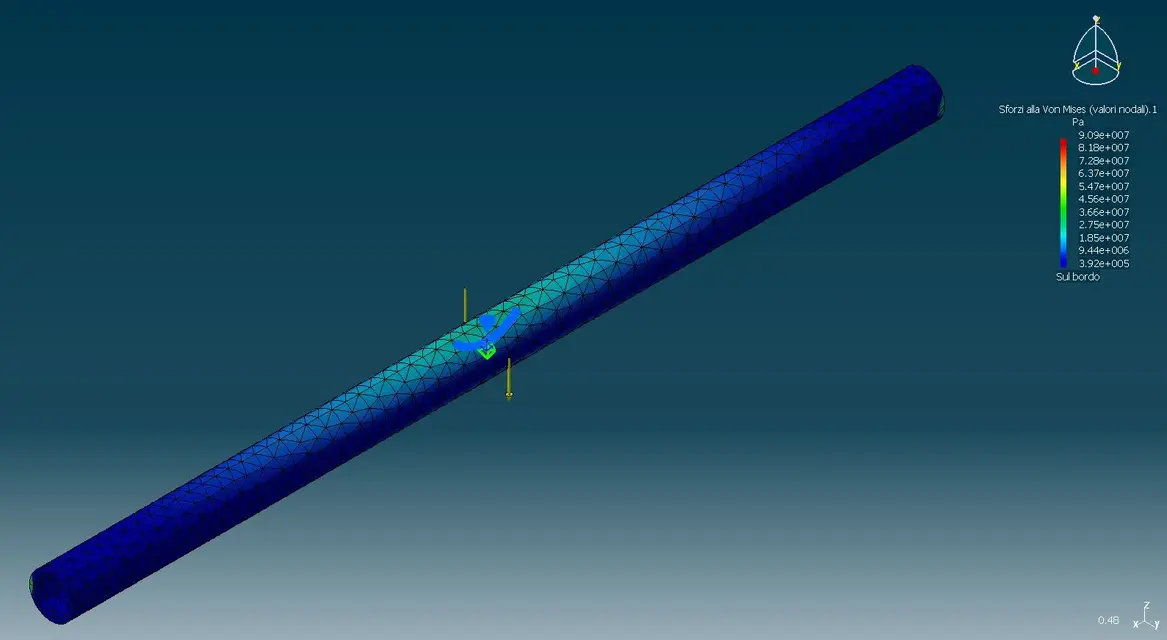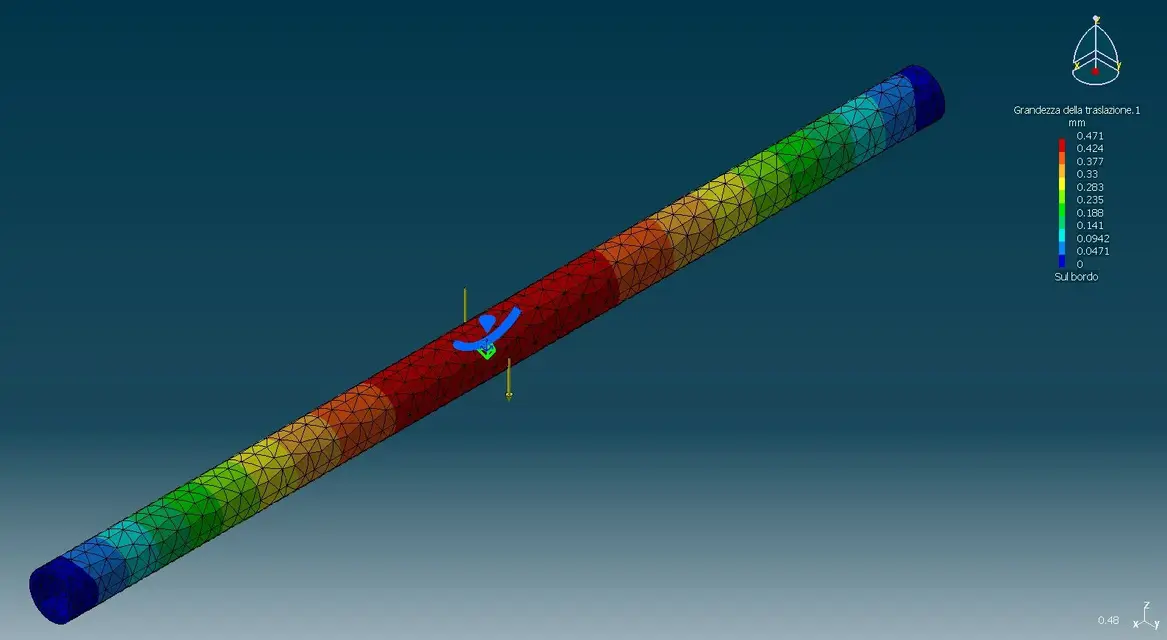ector
Guest
hi guys, here I am again with some problem to solve...I just started working with cosmosworks, and as exercise I am trying to compare the results of a cylindrical isostatic beam model with how much I get from theory. as an arrow following the load I go well, but as a bending voltage we are not there. I have tried in different ways, but it never comes out the value "correct".
I send you the model, maybe I'm wrong (secure) a passage, so that you can kindly give me some tips.
Ettore
I send you the model, maybe I'm wrong (secure) a passage, so that you can kindly give me some tips.
Ettore

